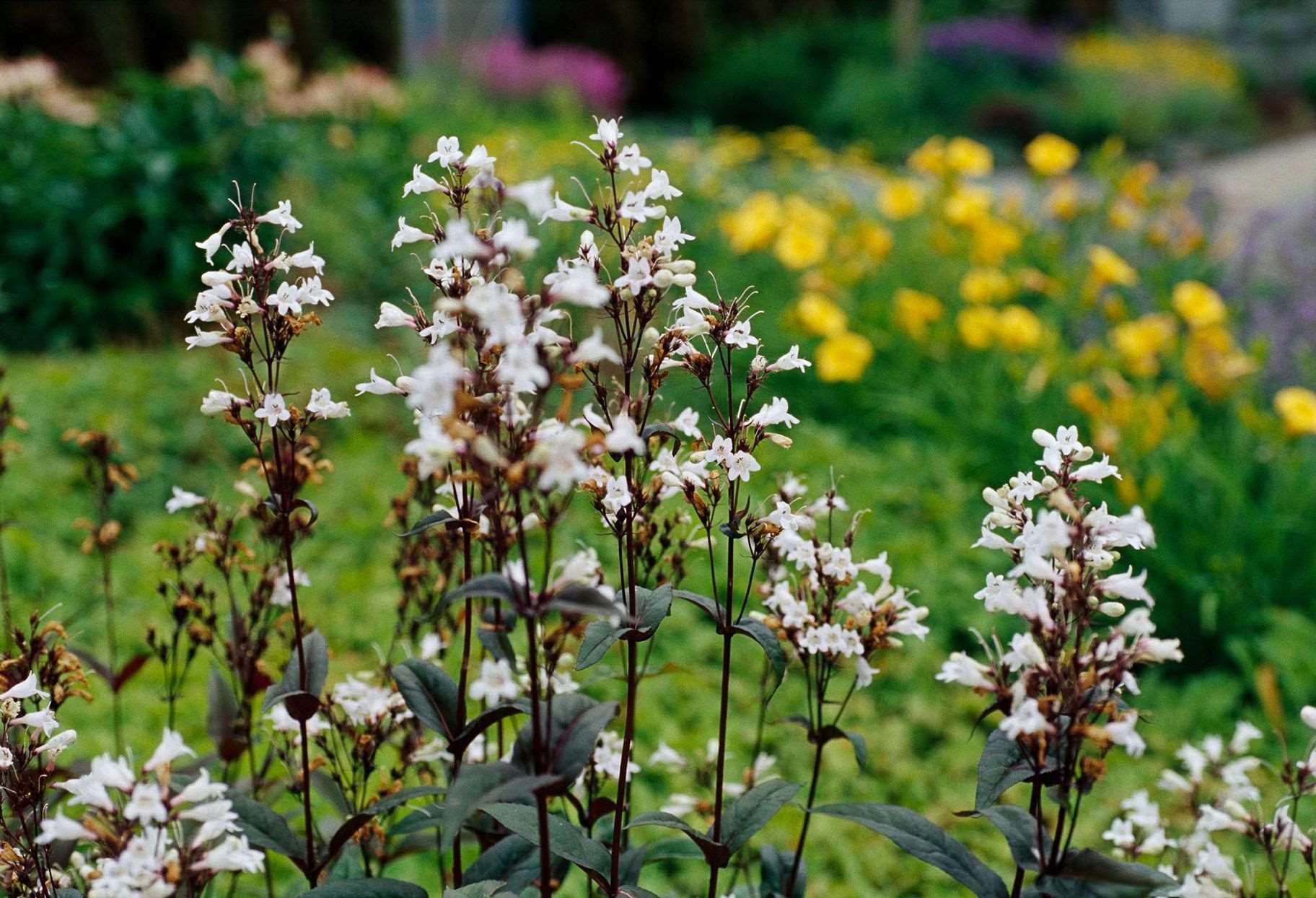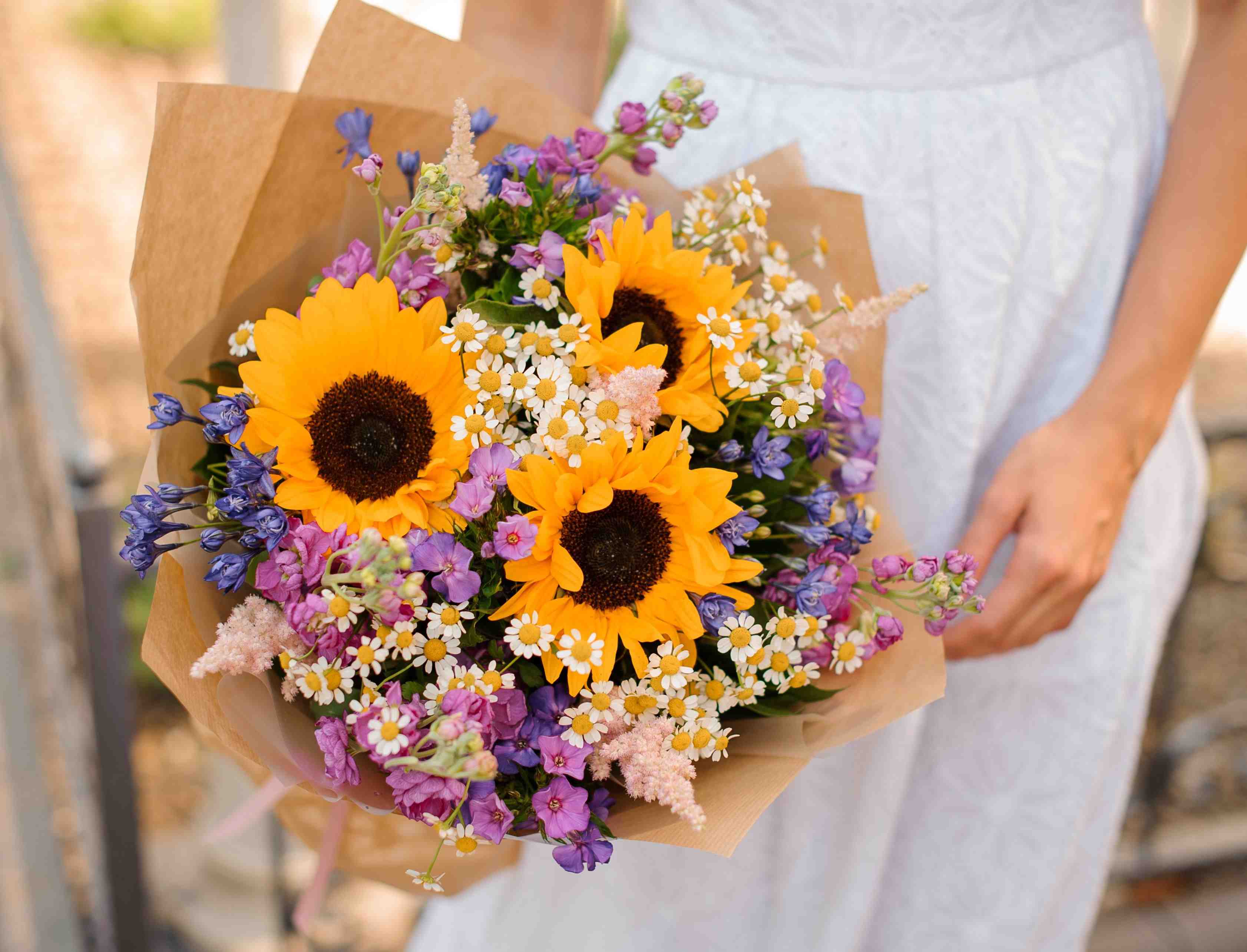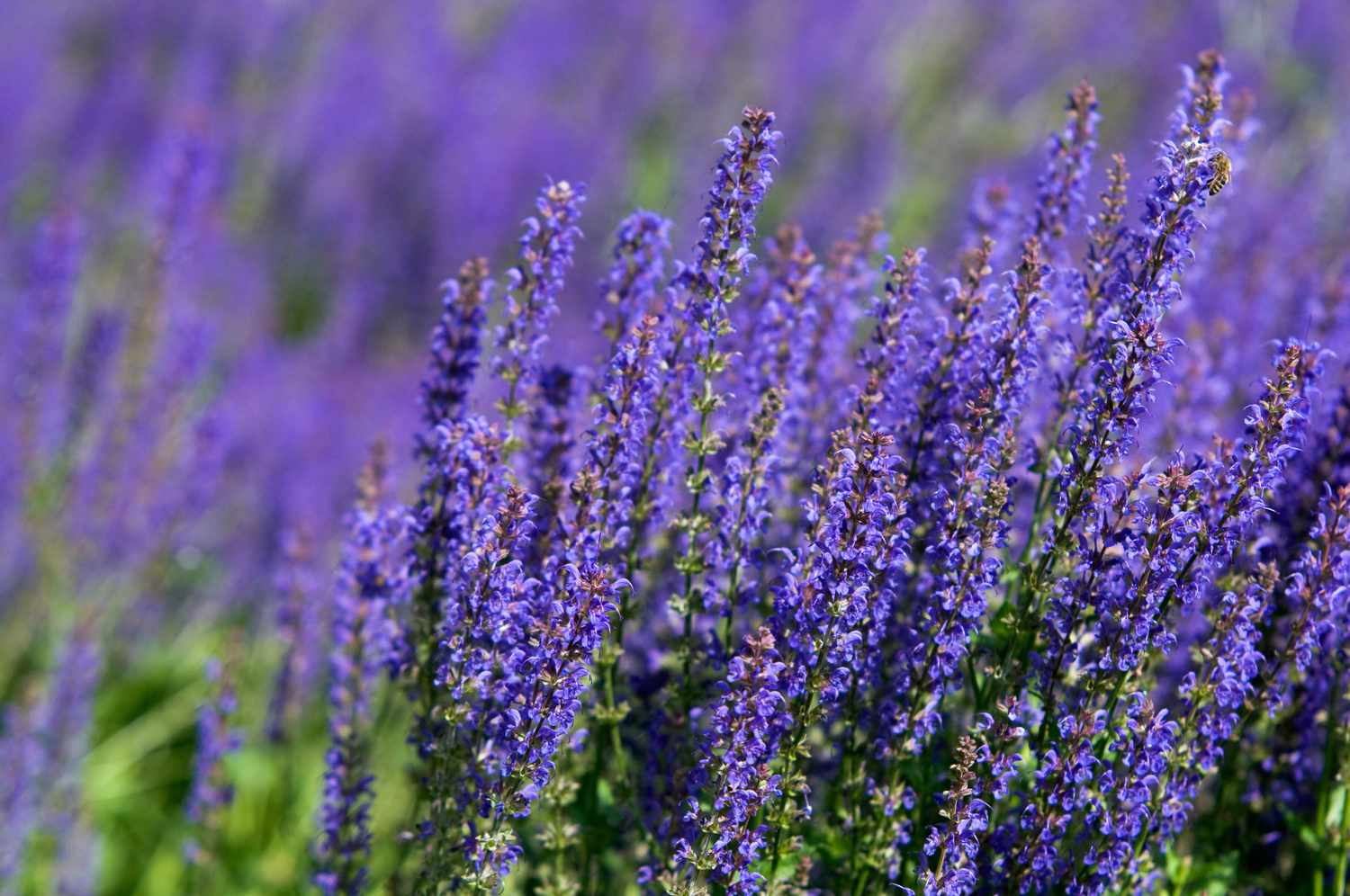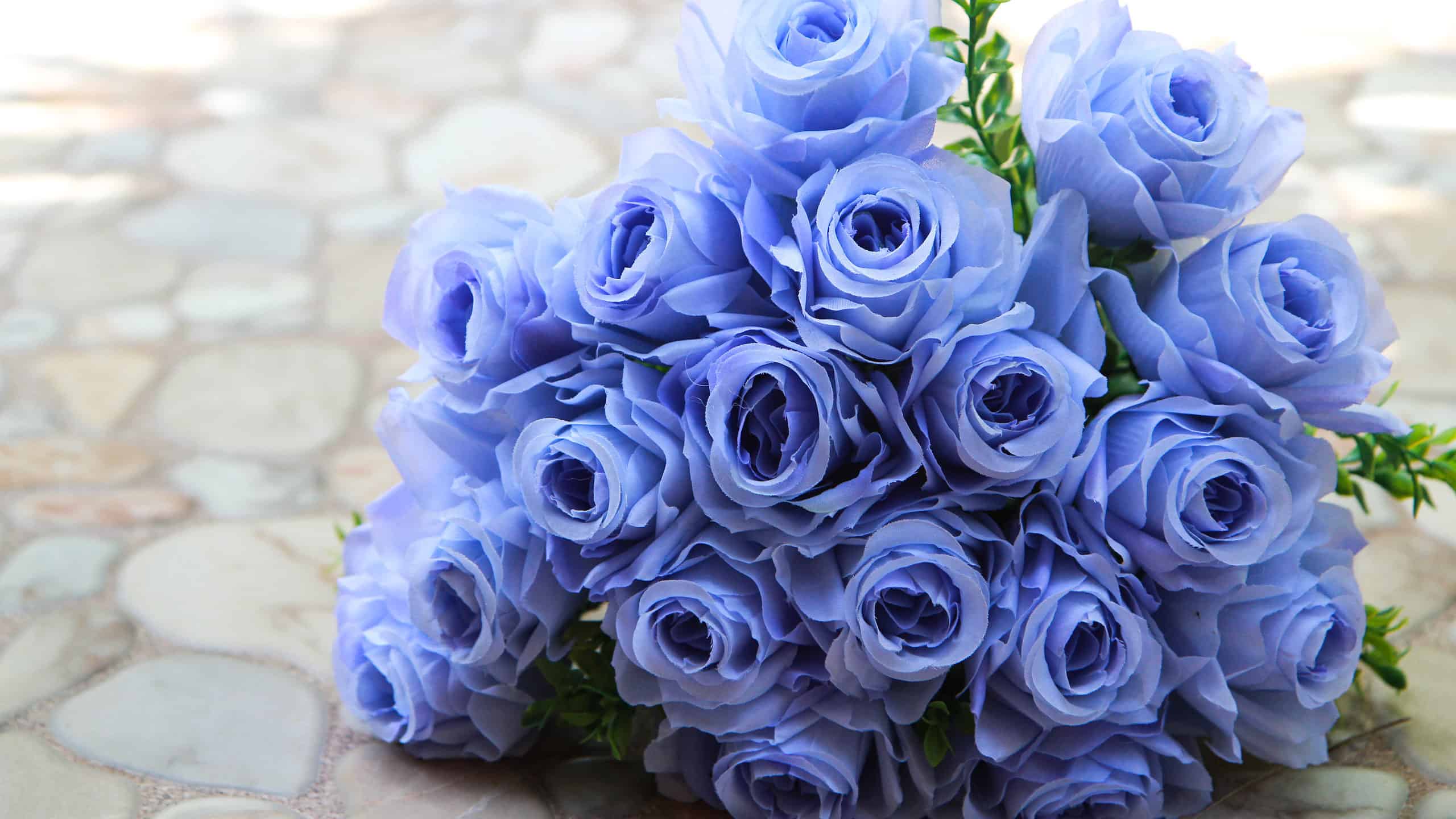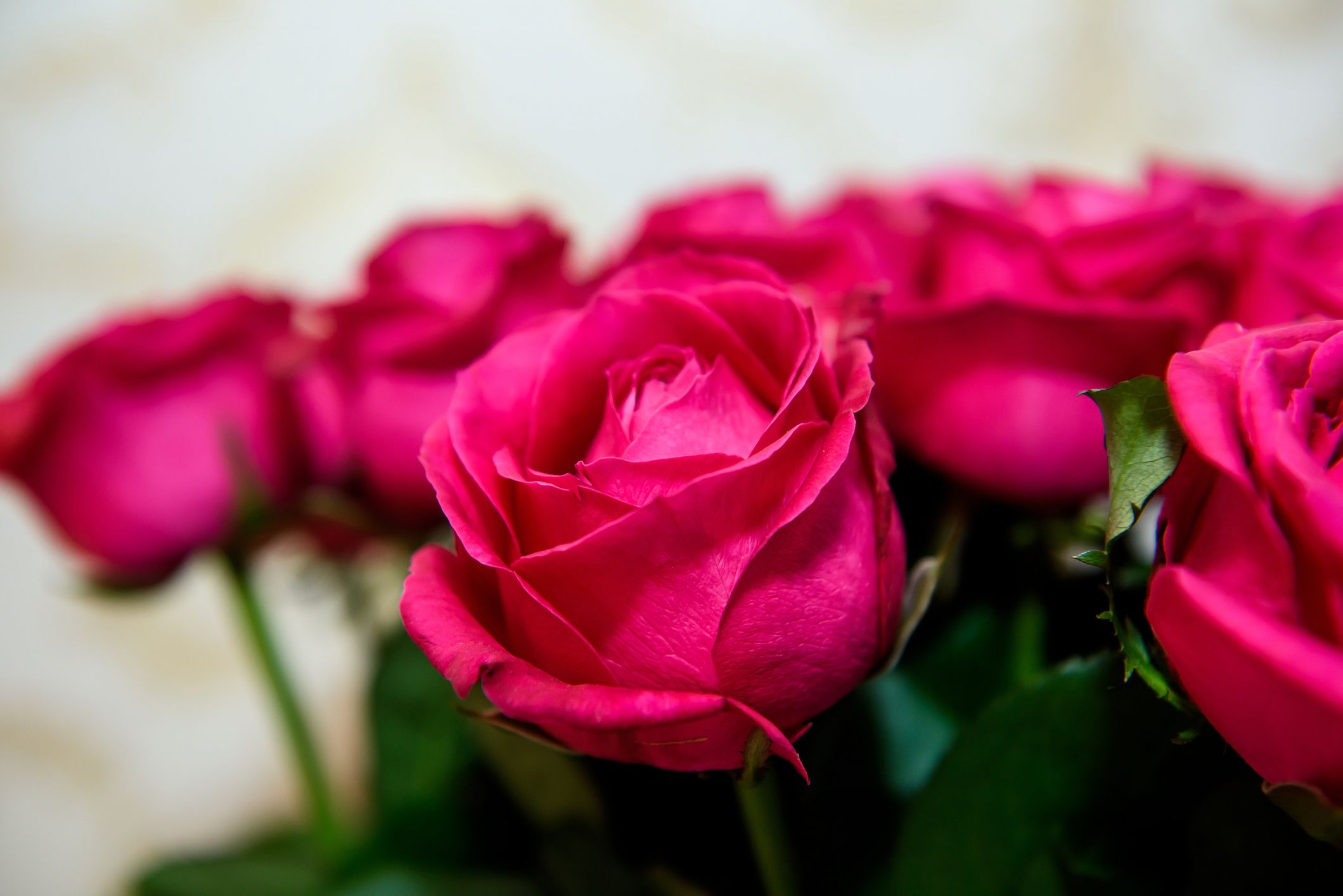Home>Types of Gardening>Ornamental Gardening>What Are Annual Flowers
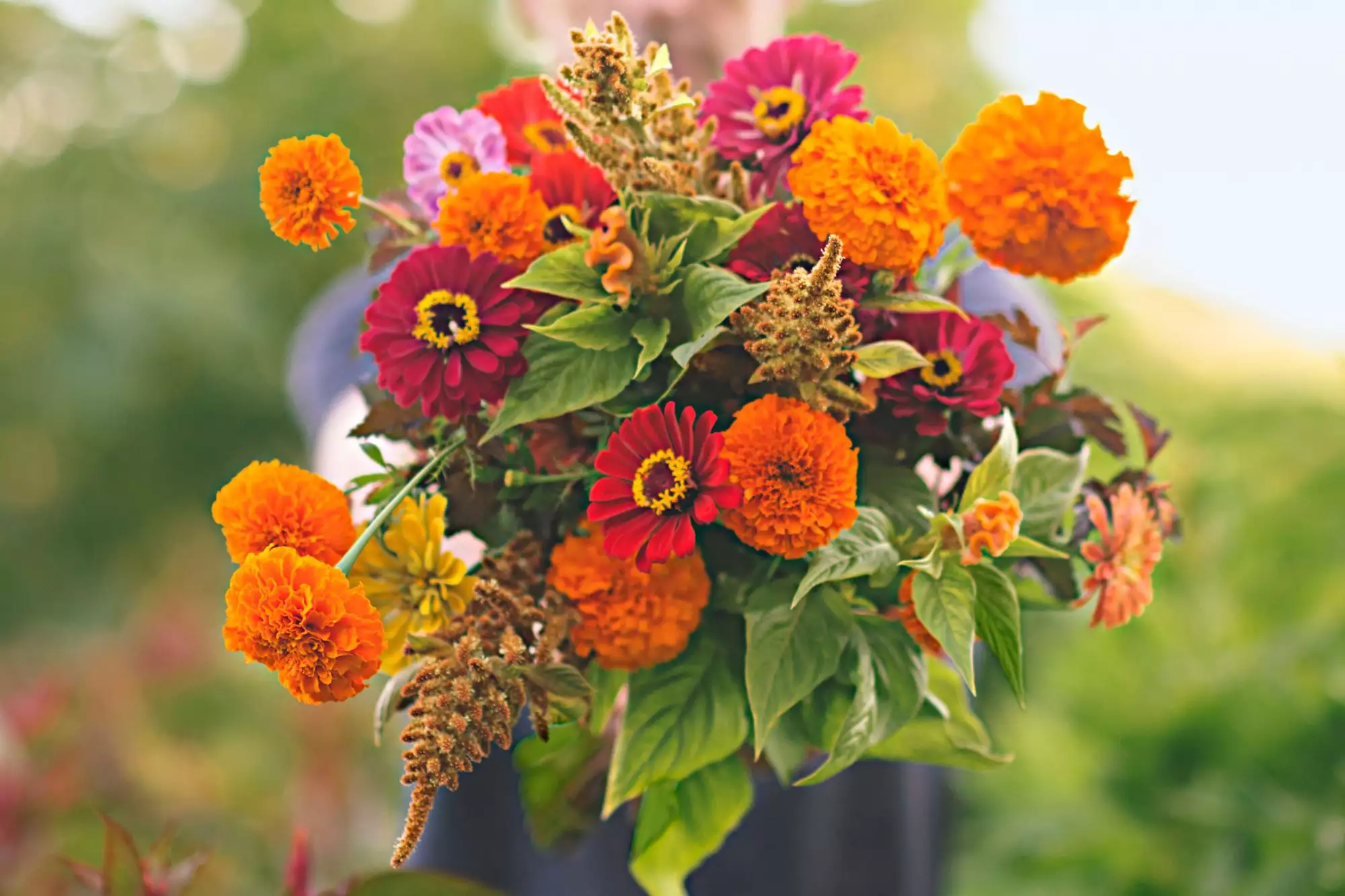

Ornamental Gardening
What Are Annual Flowers
Modified: January 22, 2024
Discover the beauty of annual flowers in ornamental gardening. Learn about the benefits, varieties, and how to care for these stunning plants.
(Many of the links in this article redirect to a specific reviewed product. Your purchase of these products through affiliate links helps to generate commission for Chicagolandgardening.com, at no extra cost. Learn more)
Table of Contents
Introduction
Welcome to the fascinating world of ornamental gardening! If you’re passionate about beautifying your outdoor space with vibrant blooms and lush foliage, then you’ve come to the right place. In this article, we’ll explore the enchanting realm of annual flowers and how they can transform your garden into a stunning masterpiece.
Annual flowers are a beloved staple in the gardening world for their ability to add instant color and charm to any landscape. Unlike perennial flowers, which return year after year, annual flowers complete their life cycle in a single season. While their presence may be fleeting, their impact is anything but.
The diversity of annual flowers is truly remarkable, with a vast array of sizes, shapes, colors, and fragrances available to suit every gardener’s taste. From delicate petunias to bold marigolds, there is an annual flower to suit every aesthetic preference.
Whether you’re an experienced gardener looking to add some new varieties to your collection or a beginner seeking to embark on the joyful journey of gardening, annual flowers are an excellent choice. Not only do they bring beauty to your outdoor space, but they also offer a multitude of benefits that make them worth the effort.
In the following sections, we’ll delve deeper into the definition and characteristics of annual flowers, explore the benefits of growing them, discuss popular varieties, offer planting and care tips, address common problems, and highlight their numerous uses. By the end of this article, you’ll be equipped with the knowledge and inspiration to create a spectacular garden that will delight your senses.
So, grab your gardening gloves and let’s embark on a wonderful adventure into the world of annual flowers!
Definition of Annual Flowers
Before we dive deeper into the world of annual flowers, let’s start with a clear understanding of what exactly they are. Annual flowers, also known as annuals, are plants that complete their life cycle – from seed to flower to seed – within a single growing season. Unlike perennial flowers that come back year after year, annual flowers typically die off at the end of the season and need to be replanted.
One distinct characteristic of annual flowers is their relatively short lifespan. While some annuals may stay in bloom for several months, others may only flower for a few weeks. Despite their temporary nature, annual flowers make up for it with their vibrant colors and abundant blooms.
Another defining feature of annual flowers is their ability to produce an abundance of seeds. This allows them to disperse and ensure their survival for future seasons. These seeds can be harvested and saved for replanting or left to fall naturally, allowing the flowers to reseed themselves.
Annual flowers come in a wide variety of shapes, sizes, colors, and textures, offering endless possibilities for creative garden design. From delicate and dainty blossoms to bold and showy displays, there is an annual flower to suit every taste and gardening style.
It’s worth noting that the term “annual” can also refer to plants that are grown as annuals in certain climates. For example, a plant that is technically a perennial in a warmer climate might be grown as an annual in a colder region where it cannot survive the winter.
Now that we have a clear definition of what annual flowers are, let’s explore their unique characteristics and the benefits they bring to our gardens.
Characteristics of Annual Flowers
Annual flowers possess several distinct characteristics that set them apart from other types of plants. Understanding these traits can help you make informed decisions about incorporating them into your garden. Let’s explore the key characteristics of annual flowers:
Blooming Period: Annual flowers have a relatively short blooming period. While some may bloom for several months, others may only flower for a few weeks. Their ability to produce abundant blooms during this period adds a burst of color and visual interest to your garden.
Color Variety: Annual flowers come in a wide range of colors, from vibrant and bold hues to soft and pastel shades. This color diversity allows you to create stunning color combinations and themes in your garden, ensuring a visually appealing landscape.
Size and Shape: Annual flowers exhibit a wide range of sizes and shapes. From delicate, trailing vines to tall, upright stalks, and from small, compact blooms to large, showy flowers, there is an annual flower to suit every preference and garden style.
Texture: Annual flowers also vary in texture, with some having smooth, glossy leaves and others featuring fuzzy or serrated foliage. This textural diversity adds depth and visual interest to your garden design.
Fragrance: Many annual flowers emit delightful scents that can enhance the ambiance of your garden. From the sweet aroma of roses to the spicy scent of marigolds, fragrance adds an extra sensory element to the display of annual flowers.
Adaptability: Annual flowers are known for their adaptability to different growing conditions. They can thrive in a wide range of soil types, tolerate varying light levels, and endure both hot and cold temperatures. This adaptability makes them suitable for various landscapes and climates.
Growth Habit: Annual flowers exhibit different growth habits, including trailing, creeping, upright, and spreading. This diversity allows you to create different visual effects in your garden, such as cascading plants in hanging baskets or tall blooms as dramatic focal points.
By understanding the characteristics of annual flowers, you can strategically choose the varieties that best complement your garden’s overall design and fulfill your desired aesthetic vision. In the next section, we’ll explore the numerous benefits that growing annual flowers can bring to your garden and outdoor space.
Benefits of Growing Annual Flowers
Growing annual flowers in your garden offers a multitude of benefits that go beyond their visual appeal. These benefits make them a popular choice among gardeners of all levels of experience. Let’s explore some of the advantages of incorporating annual flowers into your outdoor space:
Instant Color: One of the greatest advantages of annual flowers is their ability to provide instant color and brightness to your garden. With their quick growth and abundant blooms, they can transform a dull landscape into a vibrant and inviting space in a short period of time.
Flexibility: Annual flowers offer great flexibility in terms of design and layout. Since they complete their life cycle in a single season, you can easily experiment with different colors, sizes, and varieties each year to achieve a desired aesthetic or to create a fresh look in your garden.
Seasonal Variety: Growing annual flowers allows you to enjoy a wide range of flowers throughout the year. By selecting different annuals for each season, you can ensure a continuous display of stunning blooms, keeping your garden visually appealing and ever-changing.
Easy Maintenance: Annual flowers are generally easy to care for, making them an excellent choice for both experienced gardeners and beginners. They have simple pruning requirements and are less likely to become overgrown or invasive. With a little watering, fertilizing, and deadheading, you can keep your annual flowers healthy and blooming.
Cost-Effective: Annual flowers are often more affordable compared to perennial plants, as they are grown from seeds rather than established plants. This allows you to create a beautiful garden on a budget. Furthermore, as many annual flowers produce an abundance of seeds, you can collect and save them to use for future planting, reducing the need to purchase new plants each year.
Pollinator Attraction: Annual flowers are not only pleasing to the human eye but also attract beneficial pollinators such as bees, butterflies, and hummingbirds. These pollinators play a crucial role in the ecosystem, aiding in the pollination of other plants and supporting biodiversity in your garden.
Container Gardening: Many annual flowers are well-suited for container gardening. Their compact size and adaptability make them ideal for adorning balconies, porches, and patios, adding beauty even in small spaces.
Seasonal Themes: Annual flowers offer the opportunity to create themed gardens based on specific seasons or occasions. For example, you can plant tulips and daffodils for a vibrant spring display or opt for festive annuals like poinsettias for a Christmas-themed garden. This allows you to personalize your garden and add a touch of seasonal charm.
With these various benefits in mind, it’s clear that growing annual flowers can bring joy, visual interest, and numerous advantages to your garden. In the next section, we’ll explore some popular varieties of annual flowers that you can consider for your own garden.
Popular Varieties of Annual Flowers
When it comes to annual flowers, the options are seemingly endless. From delicate and dainty blossoms to bold and showy displays, there is a wide variety of annual flowers to suit every taste and garden style. Let’s explore some of the most popular varieties of annual flowers:
1. Marigolds (Tagetes): Marigolds are known for their bright, cheerful blooms and a distinct, spicy scent. They come in a range of colors, including shades of yellow, orange, and red. Marigolds are easy to grow, making them a favorite among beginner gardeners.
2. Petunias: Petunias are beloved for their trumpet-shaped flowers and their ability to bloom profusely. They come in a variety of colors, including vibrant pinks, purples, and whites. Petunias are versatile and can be grown in hanging baskets, containers, or as ground covers.
3. Zinnias: Zinnias are known for their bold and vibrant blooms, making them a popular choice for adding a splash of color to gardens. They offer a wide variety of shapes, sizes, and colors, from small button-like flowers to large dahlia-like blooms.
4. Sunflowers (Helianthus): Sunflowers are known for their tall, sturdy stalks and large, sunny blooms. They are perfect for adding a dramatic focal point to your garden and are a favorite among pollinators. Sunflowers come in various sizes, and some varieties produce edible seeds.
5. Cosmos: Cosmos are delicate and airy annual flowers that are available in a range of colors, including pink, white, and orange. They have feathery foliage and produce daisy-like flowers that attract butterflies and bees. Cosmos are excellent for adding a touch of grace and charm to your garden.
6. Pansies (Viola): Pansies are known for their distinctive “face-like” blooms, with a central dark blotch surrounded by petals of various colors. They are cold-tolerant, making them an excellent choice for early spring or fall planting. Pansies are prized for their ability to add charm and color to borders, containers, or flower beds.
7. Impatiens: Impatiens are shade-loving annual flowers that are famous for their vibrant and long-lasting blooms. They come in a wide range of colors, including red, pink, orange, and white. Impatiens are great for adding splashes of color to shady areas of your garden.
8. Geraniums (Pelargoniums): Geraniums are classic annual flowers known for their clusters of vibrant blooms and fragrant foliage. They come in various colors, including shades of red, pink, and white. Geraniums are versatile and can be grown in containers, window boxes, or directly in the ground.
9. Nasturtiums (Tropaeolum): Nasturtiums are known for their vibrant and edible blooms that come in shades of orange, yellow, and red. They have trailing or climbing growth habits, making them ideal for hanging baskets or trellises. Nasturtiums are not only visually appealing but also attract pollinators.
10. Sweet Alyssum (Lobularia maritima): Sweet Alyssum is a delicate annual with clusters of tiny, fragrant flowers. They are available in white, pinks, and purples. Sweet Alyssum is often used as a ground cover or to edge flowerbeds, adding a soft and sweet fragrance to your garden.
These are just a few examples of the popular varieties of annual flowers available to gardeners. Depending on your preferences and growing conditions, you can choose a combination of these or explore more options to create a stunning and diverse display of annual flowers in your garden.
In the next section, we’ll look at the steps involved in planting annual flowers to ensure they thrive in your garden.
How to Plant Annual Flowers
Planting annual flowers is a straightforward process that requires careful consideration of the growing conditions and proper preparation of the soil. By following a few simple steps, you can ensure that your annual flowers have the best start in your garden. Here’s a guide on how to plant annual flowers:
1. Choose the Right Location: Assess the growing conditions in your garden, including the amount of sunlight, shade, and soil quality. Different annual flowers have specific preferences regarding light and soil moisture. Select flowers that are suitable for the specific conditions in your chosen planting area.
2. Prepare the Soil: Ensure the soil is well-draining and rich in organic matter. Remove any weeds or rocks from the planting area and loosen the soil using a garden fork or tiller. This will provide a loose and fertile foundation for your annual flowers to thrive.
3. Dig Planting Holes: Dig holes in the prepared soil, making them slightly wider and deeper than the root ball of the annual plants. Space the holes according to the recommended spacing guidelines for the specific flower variety you are planting.
4. Amend the Soil: Mix compost or well-decomposed organic matter into the bottom of the planting holes. This will provide additional nutrients for the roots and enhance moisture retention in the soil.
5. Remove Plants from Containers: Gently remove the annual flowers from their containers or packs. Gently loosen the root ball, being careful not to damage the roots. If the roots are tightly wound, make a few shallow cuts along the sides to encourage outward growth.
6. Plant the Flowers: Place the annual flowers into the prepared holes, ensuring that the top of the root ball is level with or slightly above the soil surface. Backfill the holes with soil, gently firming it around the roots to eliminate air pockets.
7. Water Thoroughly: After planting, water the annual flowers thoroughly to settle the soil and ensure good contact between the roots and the surrounding soil. This will help the plants establish themselves and reduce the stress of transplanting.
8. Mulch: Apply a layer of organic mulch, such as wood chips or straw, around the base of the flowers. This will help suppress weeds, retain moisture, and regulate soil temperature.
9. Regularly Water and Maintain: Water the newly planted annual flowers regularly, especially during dry spells, to keep the soil evenly moist. Follow specific watering guidelines for the particular flower varieties you have planted. Monitor for pests and diseases, and take necessary measures to protect your plants.
10. Prune and Deadhead: Remove faded flowers (deadheading) to encourage continuous blooming and maintain a tidy appearance. Prune any damaged or diseased foliage to promote healthy growth.
By following these steps, you can ensure that your annual flowers are properly planted and have the best conditions to flourish in your garden. With proper care and maintenance, your annual flowers will reward you with a beautiful and vibrant display throughout the growing season.
In the next section, we’ll delve into the essential care and maintenance practices for annual flowers to keep them healthy and thriving in your garden.
Care and Maintenance of Annual Flowers
To ensure the health and longevity of your annual flowers, proper care and maintenance are essential. By following a few basic practices, you can keep your blooms vibrant and your plants thriving. Here are some important care and maintenance tips for annual flowers:
Watering: Regular and consistent watering is crucial to keep your annual flowers hydrated, especially during dry periods. Water deeply to ensure the moisture reaches the root zone but avoid overwatering, which can lead to root rot. Check the soil moisture regularly and adjust your watering schedule accordingly.
Fertilizing: Feed your annual flowers with a balanced fertilizer to promote healthy growth and abundant blooms. Choose a fertilizer specifically formulated for flowering plants and follow the instructions on the package for application rates and frequency. Avoid over-fertilizing, as it can result in excessive foliage growth and reduced flower production.
Deadheading: Remove faded flowers by deadheading regularly. Snip off the spent blooms just above a set of healthy leaves or buds. Deadheading encourages continuous blooming and prevents the plant from putting energy into seed production, redirecting it towards producing new flowers instead.
Weeding: Keep your flower beds clear of weeds that compete for nutrients, water, and sunlight. Regularly inspect your garden and remove any weeds promptly to prevent them from overtaking your annual flowers. Mulching can help suppress weeds and conserve soil moisture.
Pest and Disease Control: Monitor your annual flowers for common pests such as aphids, slugs, snails, and caterpillars. Take appropriate measures to control infestations, such as using organic insecticides or employing natural pest control methods. Keep an eye out for signs of diseases like fungal infections or rot, and promptly address any issues to prevent further spread.
Support and Staking: Some taller varieties of annual flowers may require support to prevent them from flopping over or breaking. Use stakes, cages, or trellises to provide support and keep your plants upright. This will help maintain their overall appearance and prevent damage to stems and blooms.
Seasonal Maintenance: Depending on your specific flower varieties, you may need to take additional maintenance steps throughout the growing season. Some annuals may benefit from occasional pinching back to promote bushy growth, while others may require periodic pruning to remove leggy or damaged stems. Familiarize yourself with the specific needs of each flower variety and adjust your maintenance practices accordingly.
Winter Protection: Since annual flowers typically do not survive winter, it’s essential to plan for their protection or replanting in the following season. Remove annual flowers once they have finished blooming or have been killed by frost. Clear away debris and apply a layer of mulch to protect soil during the winter months.
By following these care and maintenance practices, you can enjoy healthy and vibrant annual flowers throughout the growing season. Remember to monitor your plants regularly, stay proactive in pest and disease control, and adjust your care routine based on the specific needs of your flower varieties. With proper attention, your annual flowers will reward you with a stunning and colorful display.
In the next section, we’ll address some common problems that you may encounter while growing annual flowers and offer solutions to overcome them.
Common Problems and Solutions for Annual Flowers
While annual flowers are generally resilient and low-maintenance, they can still face a variety of common problems. Identifying and addressing these issues promptly is key to keeping your plants healthy and thriving. Here are some common problems you may encounter while growing annual flowers and their corresponding solutions:
1. Pest Infestation: Common pests such as aphids, slugs, snails, and caterpillars can damage the foliage and flowers of your annuals. Treat infestations by using organic insecticides, introducing natural predators, or manually removing the pests from the plants.
2. Fungal Diseases: Fungal infections like powdery mildew and leaf spot can affect the health and appearance of your annual flowers. To prevent the spread of diseases, provide adequate air circulation, avoid overhead watering, and apply fungicides labeled for ornamental plants, following the instructions carefully.
3. Overwatering or Underwatering: Improper watering can lead to stress and damage to your annual flowers. Overwatering can cause root rot, while underwatering can result in wilting and stunted growth. Water your plants deeply and consistently, allowing the top inch of soil to dry out between waterings.
4. Nutrient Deficiencies: Nutrient deficiencies can manifest as yellowing leaves, stunted growth, or poor flowering. Feed your annual flowers with a balanced fertilizer to provide the necessary nutrients. Adjust the frequency and dosage based on the specific requirements of the plants.
5. Leggy Growth: Some annuals may exhibit leggy growth, with elongated stems and sparse foliage. This can be caused by insufficient sunlight or overcrowding. Provide adequate light exposure by pruning nearby plants or relocating to a sunnier spot. Pinching back the stems can also promote bushier growth.
6. Heat Stress: High temperatures and intense sunlight can cause heat stress in annual flowers, leading to wilting, leaf burn, or reduced flowering. Provide shade during the hottest parts of the day, mulch the soil to conserve moisture, and water deeply to prevent dehydration.
7. Improper Planting Depth: Planting flowers too deep or too shallow can affect their overall health and growth. Follow the specific planting instructions for each variety, ensuring that the top of the root ball is level with or slightly above the soil surface.
8. Weeds: Weeds can compete with your annual flowers for resources and stunt their growth. Regularly remove weeds by hand or use mulch to suppress weed growth and maintain a clean planting area.
9. Flower Failure: If your annual flowers fail to produce blooms, it could be due to inadequate sunlight, nutrient deficiencies, or improper watering. Assess the growing conditions and adjust accordingly. Ensure sufficient light, provide proper nutrition, and maintain consistent watering practices.
10. Poor Soil Quality: If your soil lacks fertility or drainage, it can impact the overall health and growth of your annual flowers. Amend the soil by incorporating organic matter, such as compost or well-rotted manure, to improve its structure, moisture retention, and nutrient content.
By recognizing and addressing these common problems, you can help your annual flowers overcome challenges and thrive in your garden. Regular monitoring, proper watering, adequate nutrition, and timely pest and disease control are key to maintaining the health and beauty of your floral display.
In the next section, we’ll explore the various uses of annual flowers, showcasing their versatility beyond ornamental gardening.
Uses of Annual Flowers
Annual flowers are not only for enhancing the beauty of gardens and landscapes; they have a wide range of uses beyond ornamental gardening. Their versatility makes them valuable in various contexts, from culinary delights to creative crafts. Let’s explore some of the diverse uses of annual flowers:
1. Cut Flowers: Many annual flowers are popular choices for cut flower arrangements. Their vibrant colors and attractive blooms make them ideal for creating stunning bouquets to bring indoors and brighten up your living spaces.
2. Edible Flowers: Some annual flowers, such as nasturtiums, pansies, and calendula, are edible and can be added to salads, desserts, or other culinary creations. Edible flowers not only add visual appeal to dishes but also bring unique flavors and aromas.
3. Herbal Remedies: Certain annual flowers have medicinal properties and can be used in herbal remedies. Calendula, for example, is renowned for its healing and soothing properties and is often used in creams, ointments, and tinctures for skin ailments.
4. Pollinator Support: Annual flowers are excellent for attracting pollinators, such as bees, butterflies, and hummingbirds, to your garden. By providing nectar and pollen sources, they support the pollinator population and help ensure the pollination of other plants in your garden or nearby crops.
5. Aromatherapy: Some annual flowers, including lavender and chamomile, have aromatic properties that can be used in aromatherapy. The essential oils derived from these flowers are known for their calming and soothing effects, making them valuable in stress-relief products and practices.
6. Dyeing: Certain annual flowers, such as marigolds and coreopsis, can be used to extract natural dyes. These dyes can be used for dyeing fabrics, fibers, or even food. Experiment with different flower varieties to create unique and vibrant colors.
7. Crafts and Decorations: Annual flowers can be utilized in various crafts and DIY projects. Pressed flowers can be used in scrapbooking, card-making, or framed artwork. Dried flowers can be incorporated into wreaths, potpourri, or decorative arrangements.
8. Community Gardens and Urban Green Spaces: Annual flowers play an important role in community gardens and urban green spaces. They bring color, beauty, and a sense of community to shared gardens, parks, and public spaces, fostering connection and improving the well-being of residents.
9. Events and Celebrations: Annual flowers are widely used in events and celebrations, such as weddings, parties, and festivals. They contribute to the overall decor and ambiance, adding a touch of elegance and celebration to special occasions.
10. Seed Saving and Gardening Experiments: Annual flowers are wonderful for seed saving. Collecting seeds from your favorite annuals allows you to preserve and grow the same varieties in future seasons. Moreover, annual flowers can be used for gardening experiments, such as cross-pollination or hybridization, for those interested in plant breeding and exploration.
These are just a few examples of the multifaceted uses of annual flowers. Whether you’re enjoying their beauty in a vase, incorporating their flavors in your culinary creations, or engaging in creative endeavors, annual flowers bring joy, inspiration, and endless possibilities.
In the final section, we will summarize the key points discussed throughout this article and reflect on the importance of annual flowers in the world of gardening and beyond.
Conclusion
Annual flowers are an exquisite addition to any garden, offering a burst of color, fragrance, and beauty. From their diverse shapes and sizes to their ability to attract pollinators and serve various purposes beyond ornamental gardening, annual flowers bring joy and inspiration to gardeners of all levels of experience.
In this article, we explored the definition and characteristics of annual flowers. We learned that they complete their life cycle in a single growing season, offering a wide range of colors, textures, and sizes. We also discussed the benefits of growing annual flowers, including their instant color impact, flexibility in design, and affordable nature.
We delved into popular varieties of annual flowers, from vibrant marigolds and delicate petunias to majestic sunflowers and elegant cosmos. Each variety showcases its unique beauty and contributes to the overall aesthetics of a garden or landscape.
We then explored the essential steps for planting annual flowers, including choosing the right location, preparing the soil, and caring for newly planted flowers. We discussed the importance of proper watering, fertilizing, deadheading, and maintaining a weed-free environment for optimal growth and health.
Additionally, we addressed common problems that can arise while growing annual flowers, such as pest infestations, diseases, and nutrient deficiencies. By identifying and addressing these issues promptly, gardeners can ensure the long-term success and vitality of their annual flower displays.
Furthermore, we discovered the numerous uses of annual flowers beyond ornamental gardening. From using them as cut flowers and edible additions to culinary creations, to creating herbal remedies, natural dyes, and even engaging in crafts and decorations, annual flowers have numerous applications that extend far beyond their visual appeal.
In conclusion, annual flowers bring vibrancy and life to any garden or outdoor space. Their versatility, ease of care, and ability to provide instant color make them a beloved choice among gardeners. Whether you’re a seasoned gardener looking to add variety to your collection or a beginner seeking to embark on a new gardening journey, annual flowers offer countless options for creativity and enjoyment.
So, embrace the beauty and charm of annual flowers in your garden, and let them ignite your passion for ornamental gardening while adding a touch of natural splendor to your outdoor sanctuary.


